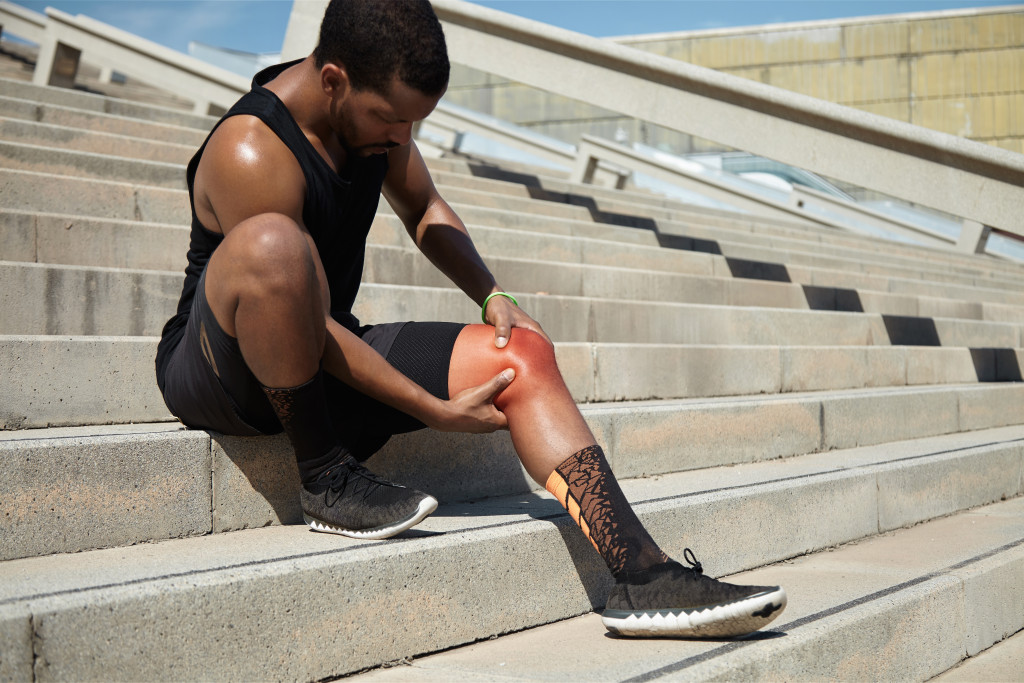A torn ACL (anterior cruciate ligament) is one of the most gruesome injuries a person can suffer. This ligament is located in the middle of the knee and helps keep the knee stable. The knee often gives out when it is torn, leading to a harrowing fall.
According to the American Academy of Orthopaedic Surgeons, ACL tears are one of the most common knee injuries. More than 200,000 people in the United States annually injure their ACLs. They also report that ACL injuries are highest in athletes who participate in high-impact sports, such as basketball, football, skiing, and soccer.
The recovery from a torn ACL can be a long and challenging process. Most people require surgery to repair the ligament and then months of physical therapy to regain strength and range of motion. There is a good chance that you will experience some degree of permanent joint damage and ongoing pain after a torn ACL. Professional athletes have a tough time recovering from this injury, as they often have to deal with losing mobility and strength. Fortunately, they have support from some of the best doctors worldwide. But how about the average person? Here are a few steps to take if you have a torn ACL.
Assess the Damage
The first step is to get a clear idea of the damage. This will help you and your doctor plan the best course of treatment. An MRI (magnetic resonance imaging) scan is usually ordered to assess the damage. The MRI will show whether or not the ACL is completely torn or just partially torn. It will also reveal other damage, such as meniscus tears or cartilage damage.
Unfortunately, a traditional MRI scan might be uncomfortable for some people. The machine is big and loud, and you must lie still for 30 minutes or more. If you have claustrophobia or anxiety, this can be a harrowing experience. That’s why many hospitals now offer upright MRI machines. They are more open and allow you to remain seated or standing during the scan. This can be a much more comfortable experience for some people.
Get a Second Opinion
Once you have the MRI results, getting a second opinion is a good idea. This is especially important if you are considering surgery. ACL surgery is a big decision, and you want to be sure it’s the right choice for you. Ask your doctor if they can refer you to another orthopedic surgeon for a second opinion.
If you decide to have surgery, there are two main options: allograft surgery or autograft surgery. Allograft surgery uses a donor tendon to replace the damaged ACL. Autograft surgery uses one of your tendons, usually from the patellar tendon or hamstring tendon, to replace the ACL.
Your age, activity level, and other factors will help your surgeon decide which type of surgery is best for you.
Preparing Finances and Time
Both allograft and autograft surgery requires a significant amount of time to recover. You will likely miss at least two months of work, and your activity level will be severely restricted. This is an excellent time to consider whether or not you have adequate sick leave or disability insurance. An injury like a torn ACL can disrupt your life and finances, so it’s essential to stay prepared.
A torn ACL is a perfect excuse to utilize your emergency fund, money set aside for unexpected expenses. This can help you cover your living expenses while you recover from surgery and miss work.
If you don’t have an emergency fund, now is an excellent time to start one. Begin by setting aside $50 from each paycheck into a savings account. Once you have saved up $1,000, you can begin investing the money in a longer-term goal, such as a retirement account.
Start Physical Therapy Early

Physical therapy is an essential part of the ACL recovery process. It begins shortly after surgery and continues for several months. Physical therapy aims to regain strength and range of motion in the knee.
Most people see a significant improvement after six to eight weeks of physical therapy. However, it can take up to a year to recover fully to the pre-injury state.
Your physical therapist will likely start you on a land-based rehabilitation program. This involves exercises designed to improve knee range of motion and muscle strength. As you progress, you will begin to add weight-bearing exercises and plyometrics. These exercises help you regain the power and explosiveness often lost after ACL surgery.
Final Thoughts
A torn ACL is a severe injury that requires surgery and significant rehabilitation. However, with the proper treatment and support, you can make a full recovery. If you have a torn ACL, follow the above steps to ensure the best possible outcome.
